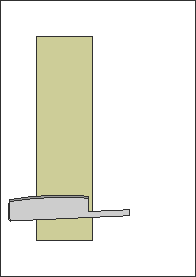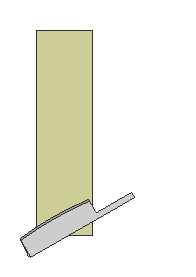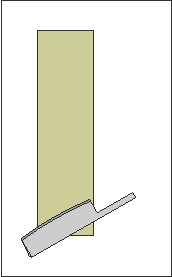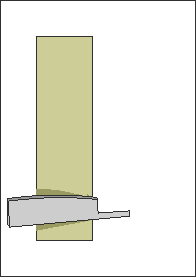Strokes for honing a razor
If there's one thing easy about honing razors, it has to be the fact that they all come with a build-in honing jig. For sharpening the vast majority of knives, the challenging part is to maintain a correct honing angle. Many jigs and fixtures are available to attain this premise, none of which we need for straight razors. Razors simply lay flat on the hone. The honing angle is defined by the thickness of the spine and the width of the blade. The hollowness of the blade provides an arch that allows a steady, wobble-free movement of the blade. As a general rule, a razor is pushed over the hone with the edge leading. When it approaches the end of the hone, the razor is turned over the spine and pushed back to the starting position where it is flipped over the spine again. Such a complete movement is often called one lap. For achieving the delicacy of a good shaving edge, pressure must be kept minimal but even, throughout the entire action. Certain types of hones really show a reverse correlation between pressure and the keenness that can be reached. Diamond hones such as those made by DMT are an easily observable example of that, but they're not the only hones that ask for nominal pressure. It is inherent to the production process that a straight razor may show small tolerances in the straightness of the blade and the evenness of the grind. As a result, even if the razor rest stable on a hone that's wide enough to support it completely, the edge may still not be touching the surface along its entire length. Even if a hone can and should be kept completely flat, the smallest amount of "dishing" will result in a less than perfect contact between edge and hone. For these reasons a strong recommendation must be made not to hone in a straight ahead direction, even if the hone is wide enough to support the entire blade. We simply have a better option that perfectly rules out these issues: the diagonal honing stroke, aka the X-stroke. The X-stroke For the majority of razors with a straight edge. This is the basic stroke for honing razors. Continually shifts the points of contact that the blade makes with the hone, compensating for small discrepancies in blade geometry and thus effectively assuring that the entire edge receives attention. The 45°-X-stroke For blades with a slight smiling curve at the edge, and blades that refuse to make good contact during the regular X-stroke. The heel stays a bit longer at the hone.
- A gallery of different strokes...
--Bart 20:58, 8 January 2009 (UTC)



